
Autostart for Manual Transmission: A Comprehensive Guide
Welcome to a comprehensive exploration of autostart systems designed for manual transmission vehicles. This guide will navigate the intricacies of installing and maintaining these systems, ensuring a safe and convenient experience. We’ll cover safety considerations, installation steps, and troubleshooting tips.
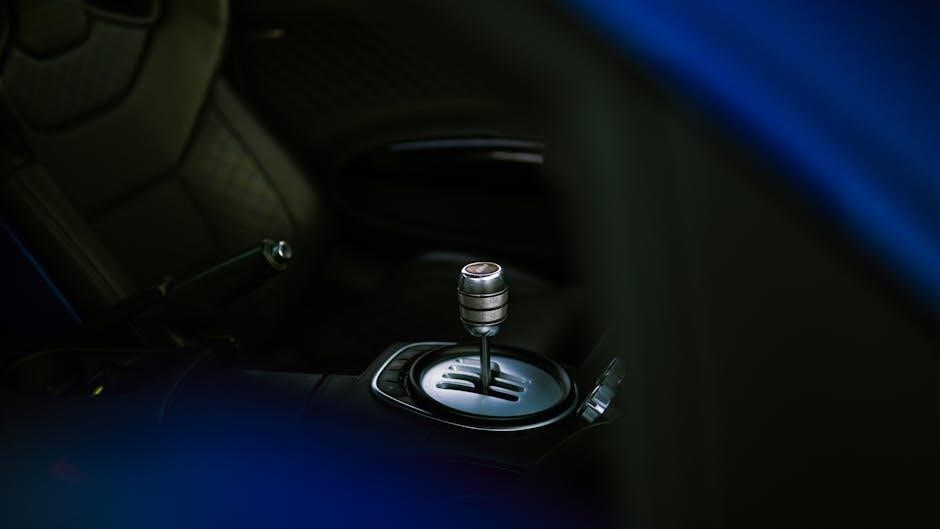
Remote starters, once primarily associated with automatic transmissions, have evolved to accommodate manual vehicles. This advancement brings the convenience of pre-warming or cooling your car to a broader audience. The integration of remote start systems into manual transmissions, however, presents unique challenges and requires careful consideration of safety protocols.
Historically, remote starters were designed with automatic transmissions in mind, relying on the inherent safety feature of the “Park” position. Adapting this technology to manual transmissions necessitates implementing sophisticated safety mechanisms to prevent accidental starts when the vehicle is left in gear. These mechanisms typically involve clutch bypass connections and neutral safety switches, ensuring the car only starts when in neutral.
Several manufacturers, like Compustar and Fortin, offer kits specifically designed for manual transmissions. These kits often include all the necessary components, such as immobilizer bypass modules and alarm systems, simplifying the installation process. The key is understanding the specific requirements of your vehicle and the chosen remote starter system to ensure a seamless and secure integration.
This introduction sets the stage for a deeper dive into the world of remote starters for manual transmissions, exploring the complexities and solutions that make this technology accessible and safe.
Understanding the Challenges of Autostart on Manual Vehicles
Implementing autostart on manual transmission vehicles introduces complexities absent in automatic counterparts. The primary challenge lies in preventing unintended movement during remote start, a significant safety concern if the vehicle is left in gear. Unlike automatics, which are safely secured in “Park,” manuals require a different approach to ensure stationary starts.
One major hurdle is the clutch safety switch, designed to prevent starting the engine unless the clutch pedal is depressed. Autostart systems must bypass this switch, simulating clutch engagement to initiate the engine. This bypass, however, introduces the risk of the car lurching forward if left in gear, demanding robust safety measures.
Furthermore, aftermarket installations must integrate seamlessly with existing vehicle systems, including immobilizers and alarms. Compatibility issues can arise, requiring specialized modules and intricate wiring. Proper programming is also crucial, ensuring the system functions correctly and adheres to safety protocols.
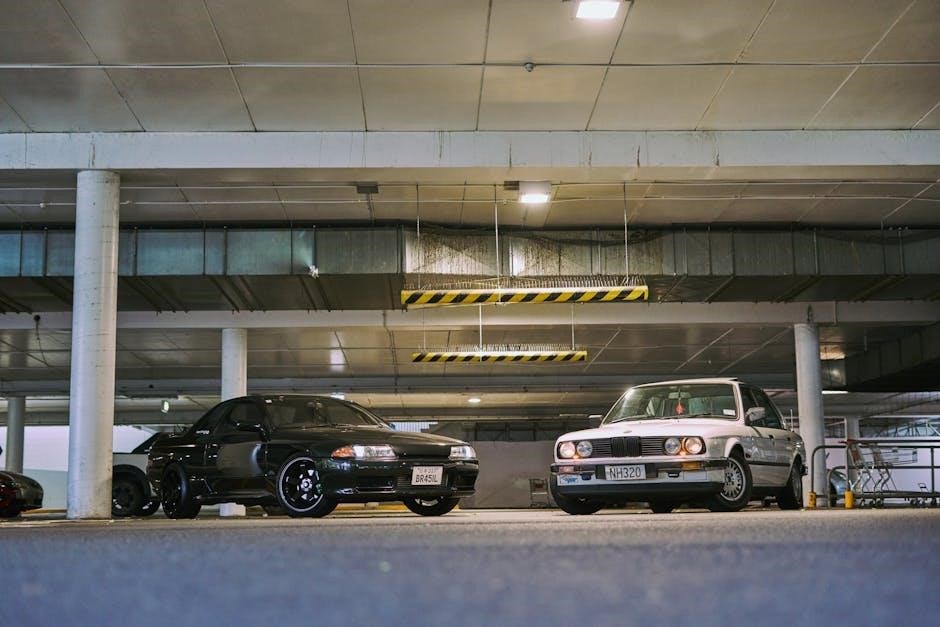
The lack of a standardized “Park” position in manual transmissions necessitates creative solutions, such as neutral safety sensors or sophisticated parking brake interlocks. These systems must reliably detect the vehicle’s state, preventing remote starts when in gear. Addressing these challenges requires a comprehensive understanding of both the vehicle’s mechanics and the autostart system’s functionality.
Safety Considerations for Manual Transmission Autostart
Prioritizing safety is paramount when installing autostart systems in manual transmission vehicles. The inherent risk of unintended movement necessitates stringent safety measures to prevent accidents. A primary concern is ensuring the vehicle is in neutral before remote starting, preventing unexpected lurches.
Clutch bypass systems, essential for autostart functionality, must be carefully designed to avoid accidental engagement. Redundant safety mechanisms, such as parking brake interlocks and neutral safety sensors, provide added protection. These systems confirm the vehicle’s state, preventing remote starts unless specific conditions are met.
Proper installation is crucial, adhering to manufacturer guidelines and safety standards. Incorrect wiring or faulty components can compromise safety features, increasing the risk of accidents. Professional installation is recommended, ensuring expertise and adherence to safety protocols.
User education is equally important, emphasizing the importance of always leaving the vehicle in neutral and engaging the parking brake. Clear warnings and instructions should be provided, highlighting potential hazards and proper usage. Regular maintenance and inspections are essential, verifying the system’s functionality and safety mechanisms. Addressing safety concerns proactively minimizes risks, ensuring a secure autostart experience.
Clutch Bypass Methods: Simulating Clutch Engagement
Implementing autostart on manual transmissions requires a clutch bypass, simulating clutch engagement for starting. Several methods achieve this, each with its advantages and disadvantages. A common approach involves a relay-based system, temporarily bypassing the clutch safety switch during remote start.
This method uses a relay to complete the circuit, mimicking the clutch pedal being depressed. The relay is triggered by the remote starter, allowing the engine to crank. Another method employs sophisticated electronic modules, integrating with the vehicle’s computer system. These modules intelligently bypass the clutch, considering various safety parameters.

These modules often incorporate features like neutral safety checks, ensuring the vehicle is in neutral before starting. Some advanced systems use digital signals to communicate with the vehicle’s ECU, providing precise clutch control. Regardless of the method, proper installation is crucial. Incorrect wiring can lead to system malfunctions or safety hazards.
Professional installation is recommended, ensuring the clutch bypass is correctly implemented and integrated with the vehicle’s electrical system. Regular maintenance is essential, verifying the bypass system’s functionality and safety features. Clutch bypass methods enable autostart functionality in manual transmissions, providing convenience with safety.
Neutral Safety Switch and its Role
The neutral safety switch plays a crucial role in autostart systems for manual transmissions, preventing accidental starts when the vehicle is in gear. This switch ensures the engine only cranks when the gear lever is in the neutral position, enhancing safety and preventing potential damage or injury.
In manual transmission vehicles, the neutral safety switch is typically located on the transmission or shifter assembly. It detects the gear lever’s position, sending a signal to the starter circuit. When the lever is in neutral, the switch allows the circuit to complete, enabling the engine to start. If the vehicle is in gear, the switch remains open, preventing the starter from engaging.
Integrating the neutral safety switch with an autostart system requires careful wiring and programming. The remote starter must interface with the switch, verifying the neutral position before initiating the start sequence. Some autostart systems include built-in neutral safety checks, adding an extra layer of protection.
These systems may use sensors or software algorithms to confirm the vehicle’s neutral state. Regular inspection of the neutral safety switch is essential, ensuring its proper functionality. A malfunctioning switch can compromise the autostart system’s safety, leading to unexpected vehicle movement. Prioritize professional installation, guaranteeing correct integration and optimal safety performance.
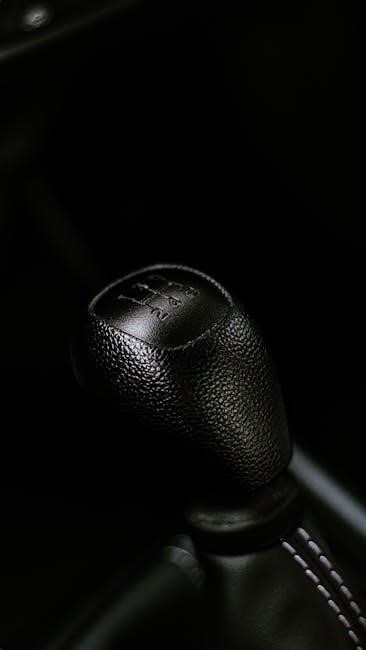
Installation Process: Step-by-Step Guide
Installing an autostart system in a manual transmission vehicle requires precision and attention to detail. Begin by gathering all necessary tools and equipment, including wiring diagrams specific to your vehicle and autostart kit. Disconnect the vehicle’s battery to prevent electrical accidents during the installation process. Locate the appropriate wiring harnesses under the dashboard, typically near the steering column or ignition switch.
Identify the wires related to the ignition, starter, and clutch bypass circuits. Connect the autostart system’s wiring harness to these wires, following the manufacturer’s instructions carefully. Use proper splicing techniques and secure connections to avoid loose wires or short circuits. Install the clutch bypass module, which simulates clutch engagement during remote start. Mount the autostart control module in a secure location, away from moving parts or extreme temperatures.
Reconnect the vehicle’s battery and test the autostart system. Verify that the engine starts only when the vehicle is in neutral and that the clutch bypass is functioning correctly. Program the autostart system according to the manufacturer’s instructions, setting any necessary parameters or security features. Finally, secure all wiring and components, ensuring they are properly insulated and protected from damage. A professional installation is highly recommended.

Essential Tools and Equipment
Successfully installing an autostart system on a manual transmission vehicle necessitates having the right tools and equipment readily available. A comprehensive set of tools ensures a smooth and efficient installation process, minimizing potential complications and ensuring safety. Essential tools include a multimeter for testing electrical circuits and verifying voltage levels, which is crucial for identifying the correct wires and ensuring proper connections.
A wire stripper and crimping tool are indispensable for preparing and connecting wires securely. Use high-quality electrical tape or heat shrink tubing to insulate connections, preventing short circuits and ensuring long-term reliability. A set of screwdrivers, including both Phillips and flathead types, is necessary for disassembling and reassembling various components of the vehicle’s dashboard and electrical system. Pliers, including needle-nose pliers, are useful for manipulating wires in tight spaces.
Additionally, a wiring diagram specific to your vehicle model is essential for identifying the correct wires for connection. A test light can also be helpful for verifying circuit continuity. Safety glasses and gloves should always be worn to protect your eyes and hands during the installation process. Finally, a quality digital voltmeter is a must-have for accurately measuring voltage and current.
Wiring and Connections Specific to Manual Transmissions
Installing an autostart system in a manual transmission vehicle presents unique wiring challenges compared to automatic models. The primary difference lies in the necessity of a clutch bypass connection. This connection simulates the clutch being depressed, allowing the engine to start remotely without physically engaging the clutch pedal. Identifying the correct clutch wire is crucial, and this information can typically be found in the vehicle’s wiring diagram or the autostart system’s installation guide.
The wiring process involves connecting the autostart system’s clutch bypass wire to the appropriate wire on the clutch switch; This connection may require splicing or tapping into the existing wiring, so it’s essential to use proper wire connectors or soldering techniques to ensure a secure and reliable connection. Incorrect wiring can lead to system malfunction or even damage to the vehicle’s electrical system.
In addition to the clutch bypass, connecting the neutral safety switch is also vital for safety. The neutral safety switch ensures that the vehicle can only be started when it’s in neutral. The wiring for this switch must be correctly connected to prevent accidental starts while the vehicle is in gear. Careful attention to detail is paramount when making these connections;
Programming the Remote Starter System
Once the physical installation and wiring are complete, programming the remote starter system is a critical step in ensuring proper functionality. Programming typically involves setting up the system to recognize the vehicle’s specific parameters and features, such as the type of transmission, the type of security system, and other vehicle-specific settings. This process often requires using a programming tool or following a specific sequence of steps outlined in the system’s manual.
One of the key programming tasks for manual transmission vehicles is setting the system to manual mode. This setting ensures that the system recognizes the vehicle as a manual transmission and enables the clutch bypass function. Additionally, programming may involve adjusting the remote start duration, which determines how long the engine will run after being started remotely. The tachometer signal needs to be learned so that the remote start knows when the engine is running.
Furthermore, programming may include setting up security features, such as alarms and immobilizer bypass functions. These features enhance the vehicle’s security and prevent unauthorized access or theft. In some cases, the system may need to be programmed to work with the vehicle’s existing keyless entry system. It’s important to carefully follow the manufacturer’s instructions during programming to avoid errors that could compromise the system’s functionality or the vehicle’s safety.
DIY vs. Professional Installation: Weighing the Options
When considering the installation of an autostart system for a manual transmission vehicle, a crucial decision arises: whether to opt for a do-it-yourself (DIY) approach or to enlist the services of a professional installer. Both options present distinct advantages and disadvantages, and the optimal choice hinges on individual skills, resources, and comfort levels.
DIY installation can be appealing for those with a strong understanding of automotive electrical systems and a desire to save on labor costs. Numerous online resources and step-by-step guides are available to assist with the installation process. However, DIY installation demands meticulous attention to detail, as incorrect wiring or programming can lead to system malfunctions or even damage to the vehicle’s electrical components. It also requires a significant time investment and the availability of specialized tools.
Professional installation, on the other hand, offers the peace of mind that comes with knowing the system is being installed by experienced technicians. Professionals possess the expertise to navigate the complexities of manual transmission vehicles, ensuring proper clutch bypass connections and system programming. While professional installation incurs labor costs, it can ultimately save time and prevent potential errors. Moreover, professional installers often provide warranties on their work, offering added protection against system failures.
Cost Factors: Parts, Labor, and System Complexity

The overall cost of installing an autostart system in a manual transmission vehicle is influenced by several factors, including the price of the parts, the labor charges if opting for professional installation, and the complexity of the system itself.
The cost of the autostart kit can vary widely depending on the brand, features, and compatibility with the specific vehicle. All-in-one kits, which include the remote starter, alarm system, and immobilizer bypass, may be more expensive upfront but can offer better value compared to purchasing individual components. Some systems may also require additional modules or accessories to function properly with a manual transmission.
Labor costs for professional installation can vary depending on the installer’s hourly rate, the complexity of the installation, and the vehicle’s make and model. Manual transmission vehicles typically require additional labor due to the need for clutch bypass connections and safety system integration. Complex systems with advanced features may also require more time and expertise to install, leading to higher labor costs.
The complexity of the system itself can also influence the overall cost. Systems with advanced features like smartphone integration, GPS tracking, or extended range may be more expensive to purchase and install.
Available Autostart Kits for Manual Transmissions
The market offers a variety of autostart kits specifically designed for manual transmission vehicles. These kits are engineered to address the unique challenges associated with manual vehicles, particularly the clutch safety switch. They incorporate features and components to ensure safe and reliable remote starting.
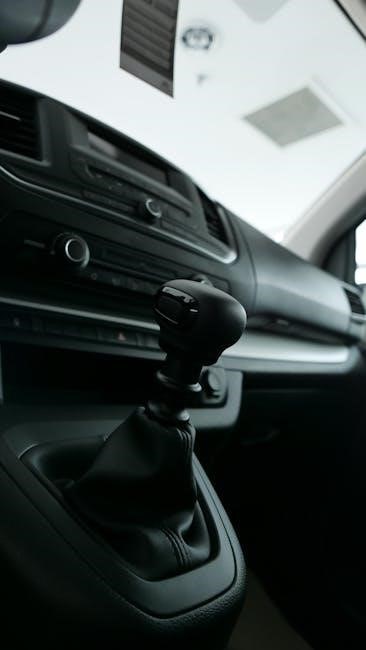
When choosing an autostart kit, it’s essential to consider compatibility with the vehicle’s make, model, and year. Some kits are designed for specific vehicles, while others offer universal compatibility. Checking the manufacturer’s specifications and consulting with a professional installer can help ensure proper fitment and functionality.
Features such as range, security, and smartphone integration vary across different kits. Some kits offer extended range, allowing remote starting from a greater distance. Security features, such as alarms and immobilizers, can help protect the vehicle from theft. Smartphone integration enables remote control and monitoring of the vehicle through a mobile app.
Popular brands like Compustar and Fortin offer autostart kits specifically designed for manual transmissions. These kits often include the necessary components for clutch bypass and safety interlocks.
Fortin All-in-One Kits: Features and Benefits
Fortin offers all-in-one autostart kits that provide a comprehensive solution for manual transmission vehicles. These kits integrate remote starting, alarm systems, and immobilizer bypass into a single, streamlined package. This integration simplifies the installation process and reduces the number of components required.
One of the key benefits of Fortin all-in-one kits is their ease of installation. The kits are designed to be plug-and-play, minimizing the need for complex wiring and programming. This makes them a popular choice for both DIY enthusiasts and professional installers.
Fortin kits often include advanced features such as data-to-data communication, which allows the remote starter to communicate directly with the vehicle’s computer system. This enhances security and reliability by preventing unauthorized access to the vehicle.
The integrated alarm system provides additional security, protecting the vehicle from theft and vandalism. The immobilizer bypass allows the remote starter to override the vehicle’s factory immobilizer system, enabling remote starting without the need for a separate bypass module.
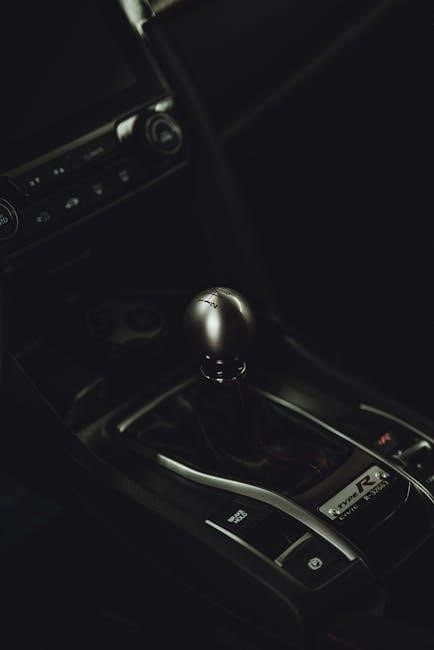
These kits provide a reliable and user-friendly solution for adding remote start functionality to manual transmission vehicles.
Compustar Systems: Clutch Bypass Connection Details
When installing a Compustar remote starter in a manual transmission vehicle, a crucial step involves the clutch bypass connection. This connection simulates the clutch being depressed, allowing the vehicle to start remotely without the driver physically engaging the clutch pedal.
The clutch bypass connection typically involves connecting a wire from the Compustar system to the clutch safety switch circuit. This circuit is designed to prevent the engine from starting unless the clutch pedal is depressed. By bypassing this switch, the remote starter can initiate the engine start sequence.
The specific wiring and connection points for the clutch bypass may vary depending on the vehicle’s make, model, and year. It is essential to consult the Compustar installation manual and vehicle-specific wiring diagrams to ensure proper connections.
In some cases, a relay may be required to properly isolate the clutch bypass circuit and prevent any interference with the vehicle’s electrical system. The relay acts as a switch, allowing the Compustar system to control the clutch bypass circuit without directly connecting to it.
Properly configuring the clutch bypass connection is critical for the safe and reliable operation of the Compustar remote starter system. Failure to do so may result in the vehicle not starting or, worse, starting unexpectedly.
Troubleshooting Common Autostart Problems
When dealing with autostart systems for manual transmissions, several common issues can arise. Troubleshooting these problems effectively requires a systematic approach and a basic understanding of the system’s components. One frequent problem is the system failing to start the vehicle, often due to issues with the clutch bypass circuit or neutral safety switch.
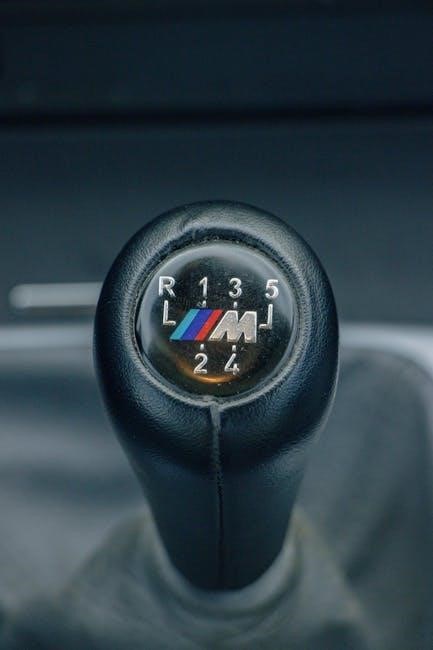
Another common issue is intermittent starting, where the vehicle starts sometimes but not others. This can be caused by loose wiring connections, a faulty bypass module, or interference from other electronic devices. It’s crucial to check all connections and ensure they are secure and properly insulated.
In some cases, the autostart system may cause the vehicle’s alarm system to trigger. This can be due to incorrect wiring or a conflict between the autostart system and the vehicle’s security system. Consulting the installation manuals for both systems is essential.
If the vehicle starts but immediately stalls, it could indicate a problem with the fuel or ignition system. This may require further diagnosis beyond the autostart system itself.
Finally, issues with the remote transmitter or receiver can also prevent the autostart system from functioning correctly. Ensure the remote battery is fresh and that the receiver is properly connected and functioning.
Bypassing the Clutch Safety Switch: A Detailed Explanation
Bypassing the clutch safety switch is a crucial step in installing an autostart system on a manual transmission vehicle. This switch prevents the car from starting unless the clutch pedal is fully depressed, a safety feature designed to prevent accidental starts while in gear. To enable remote starting, this safety mechanism needs to be temporarily overridden.
The bypass typically involves connecting a module or relay that simulates the clutch being engaged. This is achieved by splicing into the wires connected to the clutch switch. Identifying the correct wires is paramount; using a wiring diagram specific to your vehicle is highly recommended to avoid damaging the electrical system.
There are generally two common methods for bypassing the clutch safety switch. One involves using a dedicated bypass module that electronically simulates the clutch signal. The other involves using a relay to create a temporary circuit that mimics the clutch being engaged only during the remote start sequence.
It’s crucial to understand that bypassing the clutch safety switch introduces a potential safety risk if not implemented correctly. The vehicle could start in gear if the system malfunctions, leading to unintended movement. Therefore, extreme caution and meticulous wiring are essential.
Maintenance and Long-Term Reliability
Ensuring the long-term reliability of your autostart system in a manual transmission vehicle requires consistent maintenance and proactive care. Regular checks of the wiring connections are crucial to prevent corrosion or loosening, which can disrupt the system’s functionality. Inspect all splices and connections, ensuring they remain secure and well-insulated to withstand environmental factors.
Periodically test the clutch bypass module or relay to verify it’s functioning correctly. This involves confirming that the system reliably simulates clutch engagement during remote start attempts. Address any issues promptly to avoid potential safety hazards associated with the bypassed clutch safety switch.
Battery health is paramount. A weak battery can cause unpredictable autostart behavior; Regularly check the battery’s voltage and ensure it’s adequately charged, especially during colder months. Consider using a battery tender to maintain optimal charge levels when the vehicle is not in use for extended periods.
Software updates for the remote starter system, if available, should be installed to address bugs and improve performance. Keep the remote start transmitter clean and replace the battery as needed. By adhering to these maintenance practices, you can ensure the longevity and reliable operation of your autostart system.


